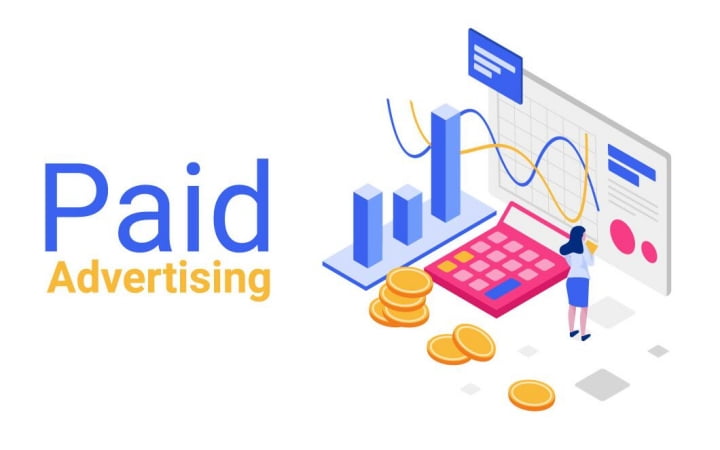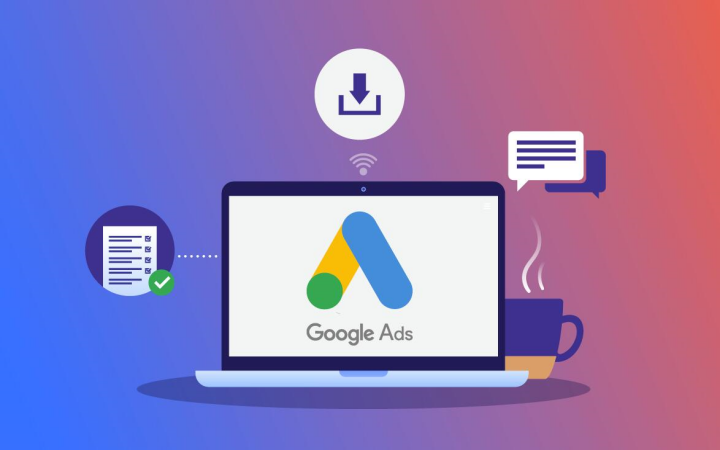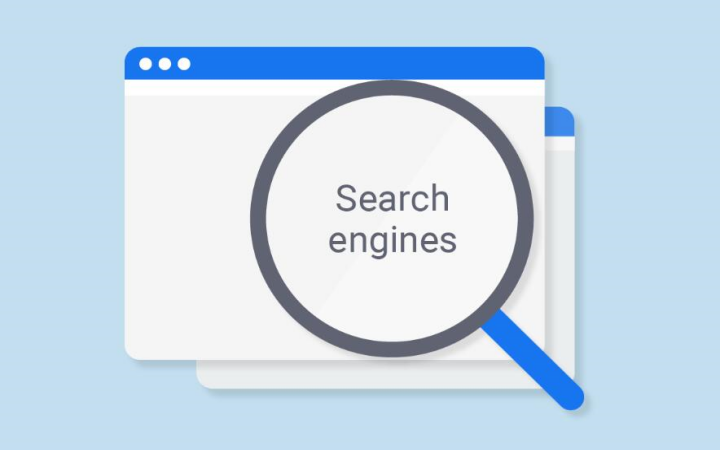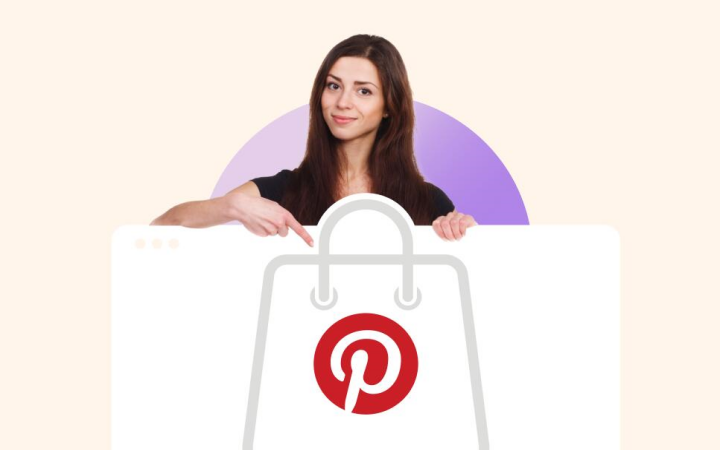As we all know, traditional and digital marketing has evolved considerably in a very short period. Digital content is widely viewed as the key differentiator that helps promote products and services. This is where paid media marketing comes into the picture. This all-encompassing guide includes the information necessary to decide on the best use of paid media in your marketing strategy.

The Essential of Paid Media Marketing
Paid media marketing involves using a paid media channel to promote your brand, products, or services. Unlike organic marketing, which relies on free SEO and content marketing techniques, paid media requires money invested in advertising platforms to gain a broad audience quickly. Some well-known examples are Google Ads, Facebook Ads, and sponsored content.
For businesses that want to increase, paid media marketing is a must. It has unique targeting abilities, which means you can expose certain age groups, preferences, and even habitual actions. Using paid media, you can boost the traffic to your website, attract prospects, and finally make the deal.
Types of Paid Pricing Models
To effectively allocate advertising funds, the marketer should be knowledgeable about different pricing models. Here are the most common types:
Cost-Per-Click
Many advertisers adopt a CPC model, where the advertiser pays fees for the ad clicked on by users. It’s a winning move for any business to let people know about it online this way, and it’s the most favorite one for advertisers when it comes to search engine advertising.
Cost-Per-Mille
CPM, or cost per thousand impressions, is a basis by which the advertising platform charges the advertiser for every thousand times the ad is presented. This model is best for campaigns that require customers to know about a brand by letting them see the advertisement on a website rather than just clicking it.
Cost-Per-Acquisition
Under the CPA payment plan, advertisers are responsible for ad clicks only after a desired action, such as a purchase or sign-up, is completed. This model emphasizes only performance and payment for the results.
Exploring Different Types of Paid Media
Paid media comes in many shapes depending on the business objectives behind it. Many different channels and formats address specific marketing objectives. The most common ones are listed here:
Search Engine Advertising
What is it?
Instead of PPC advertising, search engine advertising, which refers to ads placed on search engine results pages, is frequently used. For keywords close to or exactly the name of your business that have been searched for, your ad will be the first or the last thing people see after pushing the search button.
Key Tips for Success
- Keyword Research: Use Google Keyword Planner or other tools to see which keywords are most effective and relevant to your business.
- Ad Copy: Write persuasive ad copy incorporating your CTA and the keywords you want to target.
- Landing Pages: Create landing pages specific to achieving the goal of conversions and a delightful user experience for the site visitors who click on your ads.
Social Media Advertising
What is it?
Advertising on social media involves creating and running ads on platforms. Ads may also be displayed as regular content for in-feeds, stories, or ads alongside user-generated content.
Key Tips for Success
- Targeting: Use social media platforms’ advanced addressing options to reach your perfect audience based on demographics, interests, and behavior.
- Engaging Content: Craft striking ads with elements geared toward the target groups so that the recipients are intrigued and can interact.
- Performance Tracking: Constantly check and fix your serving of advertisements based on performance statistics like click-through rates (CTR) and completion rates.
Display Advertising
What does the banner include?
In online marketing, display advertising is a solemn, often-heard word for a plethora of advertisements that occasionally appear when people are surfing the internet. Some examples are banner ads, video ads, and rich media ads. These ads can be very visual, moving, and attractive.
Key Tips for Success
- Ad Design: To attract the public’s attention, utilize bright and bold colors and only the most essential information in the message.
- Audience Targeting: Retargeting involves showing relevant banners to users who have visited the site before or liked other things you posted.
- A/B Testing: Evaluate which ad designing variants and advertising placement sites your customers appreciate the most with the help of experiments.
Native Advertising
What is it?
Placing native ads means that the ads should be generated as if they were themselves the content type they are placed in, that is, by considering the appearance, function, and usefulness of the media they are inserted into. These ads are hardly visible and not disturbing; they merge effortlessly with the platform’s content.
Key Tips for Success
- Relevance: Ensure that your ads match the site’s topic and bring value to the users reading them.
- Transparency: Make your native ads crystal clear by clearly indicating that they are labeled as sponsored content and are not to be tampered with. This keeps the bond of trust with your audience stable.
- Integration: Native ads naturally become part of the website through close partnerships with publishers. This approach works through the user experience and allows seamless advertisement integration.
Crafting a Strong Paid Media Marketing Strategy
A compelling, paid media campaign is the outcome of a well-defined strategy. The following is a step-by-step guide that could help you commence your project:
Define Your Objectives
The very first task involved in designing an effective paid media strategy is securing the setting of goals for yourself. How will you seek to engage your customers through paid media? The most common goals are:
- Increasing website traffic
- Generating leads
- Boosting sales
- Enhancing brand awareness
- Promoting a specific product or service
The first on the list is clear and concrete goal-setting, stimulating measurable campaign success. As a result, you can make intelligent choices about where to locate your budget.
Identify Your Target Audience
The correct understanding of the target group is inevitable for every marketing campaign. Identify your potential customers by doing the following activities:
- Demographics (age, gender, income, education)
- Psychographics (interests, values, lifestyles)
- Geographics (location)
- Behavior (online activities, purchasing habits)
Moreover, thoroughly understanding your desired audience is feasible, allowing you to personalize your paid media methods.
Choose the Right Platforms
Every paid media platform has a different standing. According to your goals and demographics, some media may work better and, hence, more effective than others. Here are a few popular options:
- Google Ads: The best choice for the search engine and email marketing for the companies that sell are the ones to the online sales businesses who are attracting the customers who are coming here.
- Facebook Ads are ideal for highly targeted advertising with a clear call to action (CTA) on various social media channels.
- LinkedIn Ads: Effective in marketing to B2B and B2C markets and targeting the professionals who occupy the posted position of two titles of work, Lengths of industry, and firms to which they belong.
- Instagram Ads: Designed For Mastercard to deploy mixed-race campaigns when reaching out to young audiences who are also more committed than adults.
By choosing the correct platform, you will be able to reach your target audience, who will find your advertisements more interesting.
Create Compelling Ad Content
Your advertising content is the core of your paid media strategy. What ads are for your target audience, the more attention is attracted to them. This is where the power of your paid ad campaign is concentrated. Therefore, the more engaging and relevant your ads become, the more effective they are in capturing the attention of your chosen audience. Consider the following tips:
- Headline: Be straightforward and eye-catching with a headline that will instantly grab the readers’ attention.
- Visuals: Use pictures or videos of high quality that are in the audience’s interest.
- Copy: Say the product or service value in short form.
- Call to Action (CTA): You must use a strong CTA to convince individuals to complete the desired action, such as “Buy Now.”
Set Your Budget
Budgeting has become increasingly more integral in the function of payment media. However, it is essential to clearly define the budget levels you can afford and decide how much you are prepared to spend on them. In addition to that, ensure that your central budget is spread unevenly but effectively between all platforms and different types of ads. On the other hand, use it to ensure your objective can be reached and the potential ROI is fulfilled.
Concerning budgeting, here are a few suggestions:
- Start small: If you are new to paid media, you should limit your initial investment to a minimum to see which experiments are successful.
- Adjust Your Caps: Continuously supervise your progress and tune your budget upwards or downwards in compliance with performance indicators.
- RIO: The most crucial aspect of the return on investment is still seen when the project’s marketing vehicle is other than social media.
Monitor and Optimize
Monitor and adjust your campaigns regularly to develop a successful paid media marketing strategy. The analytical tools needed, in this case, track KPIs like CTR, conversion rates, and cost per conversion.
Here are some optimization tips:
- A/B Testing: This action, however, requires you to test various ad varieties to determine which one attracts the most attention.
- Analyze Data: Meanwhile, you should review your campaign data to see if you can find any trends that need fixing.
- Adjust Targeting: You should update your targeting ads by tracking which ads attract the most audience data.
- Optimize Bids: Your cost per click and bids are adjusted. Your bids are suitably raised so that your business will recover the extra expense. Meanwhile, the budget will be OK.
Tips for a Successful Paid-Media Marketing
You can succeed in paid media marketing through a strategic approach and continuous optimization. Here are some expert tips to help you achieve your goals:
Test and Experiment
Feel free to undertake the challenge of experimenting with various novel visual designs, targeting options, and bidding strategies. Through A/B testing, you can experiment to see which content works best for you to identify what your target audience wants and tailor campaigns to their preferences to ensure you bring it to them.
Leverage Retargeting
Retargeting allows you to collect users who have formerly been in your brand’s presence. This tactic will keep you in the circle of consideration, and hopefully, users will finalize their purchase or take another desired action.
Use Lookalike Audiences
Lookalike audiences are folks who have the same characteristics as your regular consumers. With these platforms, for instance, Facebook and Google, it is possible to aim the Posts to similar to seek the business of those most likely to be targeted by it with your product or service.
Concentrate on Creativity and Quality
To attract your audience, the high quality of the image and copy must be your primary goal. Employ professional designers and copywriters to create a funny, particular ad that will prompt a response.
Make It Mobile Friendly
As many users move their online activities to mobile, good appearance on all devices becomes critically important. Design your website with mobile users in mind and create expandable ad formats.
Detect and Analyze
Check out your method’s performance and analyze the data to identify trends and areas for improvement. Use analytic tools to identify the main KPIs, and then, backed by the data gathered to optimize your campaigns, approach your decision.
Is Paid Media Right For Your Business?
Paid media marketing provides immense benefits for a business, yet it doesn’t imply that there is a sole universal rule. When determining whether paid media is right for your business, you should consider the following factors:
Budget Constraints
One of the main reasons paid media works so well is that it requires a budget, so first, you need to figure out how much money you can spend on the campaign. Unquestionably, you can start with the minimum budget and then move slowly with the maximum budget accumulating funds.
Target Audience
First, get to know your target audience and check whether they engage with the platforms you want to use for paid media campaigns. If the target is enthusiastic about the Internet service, a different scenario will occur, and your ads will only be active based on the desired performance.
Campaign Goals
Marketing materials used should align with what the budget allows. Paid media is the fastest way to speed up getting the item or service to the customers. The other reason could be to effect a long-term linkage between the brand and the consumer; you can also opt for different marketing techniques combined with paid media.
Competitive Landscape
Comparing your rivals’ strategies with paid media helps determine the competition level in your industry. If the rest of your competitors are following this decision to such an extent, you might need to spend some money to keep your edge.
Conclusion
Paid media advertising is available, which has rich possibilities for companies seeking to promote their marketing operations and get quick results. Keep in mind that the formula for success is relentless optimization and experimentation. Follow your ads and look at the data, then decide to what extent you should alter your ads to reach your key performance indicators. Employing the correct implementation of the solution and executing it appropriately, covering media advertising, is the most beneficial choice for the company.
Are you ready to move your marketing to the International level?


